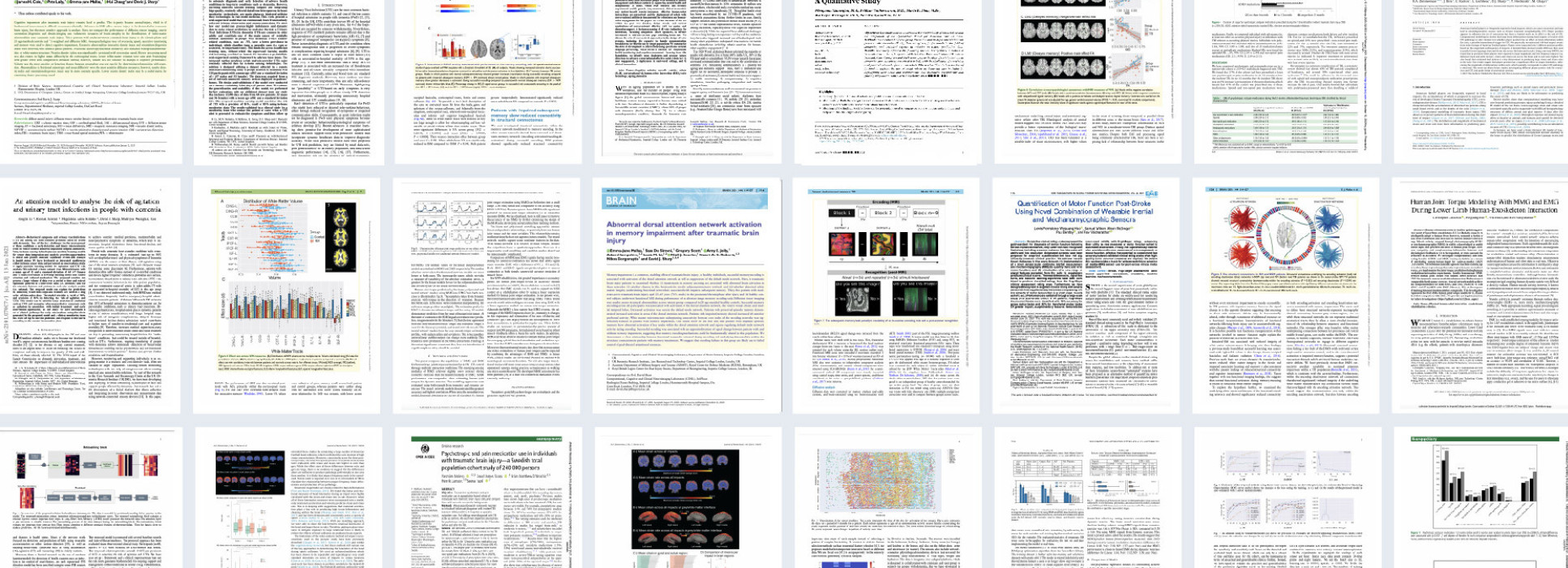
Results
- Showing results for:
- Reset all filters
Search results
-
Journal articleWairagkar M, De Lima MR, Harrison M, et al., 2021,
Conversational artificial intelligence and affective social robot for monitoring health and well-being of people with dementia.
, Alzheimers & Dementia, Vol: 17 Suppl 11, Pages: e053276-e053276, ISSN: 1552-5260BACKGROUND: Social robots are anthropomorphised platforms developed to interact with humans, using natural language, offering an accessible and intuitive interface suited to diverse cognitive abilities. Social robots can be used to support people with dementia (PwD) and carers in their homes managing medication, hydration, appointments, and evaluating mood, wellbeing, and potentially cognitive decline. Such robots have potential to reduce care burden and prolong independent living, yet translation into PwD use remains insignificant. METHOD: We have developed two social robots - a conversational robot and a digital social robot for mobile devices capable of communicating through natural language (powered by Amazon Alexa) and facial expressions that ask PwD daily questions about their health and wellbeing and also provide digital assistant functionality. We record data comprising of PwD's responses to daily questions, audio speech and text of conversations with Alexa to automatically monitor their health and wellbeing using machine learning. We followed user-centric development processes by conducting focus groups with 13 carers, 2 PwD and 5 clinicians to iterate the design. We are testing social robot with 3 PwD in their homes for ten weeks. RESULT: We received positive feedback on social robot from focus group participants. Ease of use, low maintenance, accessibility, assistance with medication, supporting with health and wellbeing were identified as the key opportunities for social robots. Based on responses to a daily questionnaire, our robots generate a report detailing PwD wellbeing that is automatically sent via email to family members or carers. This information is also stored systematically in a database that can help clinicians monitor their patients remotely. We use natural language processing to analyse conversations and identify topics of interest to PwD such that robot behaviour could be adapted. We process speech using signal processing and machine lear
-
Journal articleLiu KY, Howard R, Banerjee S, et al., 2021,
Dementia wellbeing and COVID-19: Review and expert consensus on current research and knowledge gaps
, INTERNATIONAL JOURNAL OF GERIATRIC PSYCHIATRY, Vol: 36, Pages: 1597-1639, ISSN: 0885-6230- Author Web Link
- Cite
- Citations: 42
-
Journal articleAhmadi N, Constandinou T, Bouganis C, 2021,
Inferring entire spiking activity from local field potentials
, Scientific Reports, Vol: 11, Pages: 1-13, ISSN: 2045-2322Extracellular recordings are typically analysed by separating them into two distinct signals: local field potentials (LFPs) andspikes. Previous studies have shown that spikes, in the form of single-unit activity (SUA) or multiunit activity (MUA), can beinferred solely from LFPs with moderately good accuracy. SUA and MUA are typically extracted via threshold-based techniquewhich may not be reliable when the recordings exhibit a low signal-to-noise ratio (SNR). Another type of spiking activity, referredto as entire spiking activity (ESA), can be extracted by a threshold-less, fast, and automated technique and has led to betterperformance in several tasks. However, its relationship with the LFPs has not been investigated. In this study, we aim toaddress this issue by inferring ESA from LFPs intracortically recorded from the motor cortex area of three monkeys performingdifferent tasks. Results from long-term recording sessions and across subjects revealed that ESA can be inferred from LFPswith good accuracy. On average, the inference performance of ESA was consistently and significantly higher than those of SUAand MUA. In addition, local motor potential (LMP) was found to be the most predictive feature. The overall results indicate thatLFPs contain substantial information about spiking activity, particularly ESA. This could be useful for understanding LFP-spikerelationship and for the development of LFP-based BMIs.
-
Journal articleHuo W, Moon H, Alouane MA, et al., 2022,
Impedance modulation control of a lower limb exoskeleton to assist sit-to-stand movements
, IEEE Transactions on Robotics, Vol: 38, Pages: 1230-1249, ISSN: 1552-3098As an important movement of the daily living activities, sit-to-stand (STS) movement is usually a difficult task facingelderly and dependent people. In this article, a novel impedancemodulation strategy of a lower limb exoskeleton is proposed toprovide appropriate power and balance assistance during STSmovements while preserving the wearer’s control priority. Theimpedance modulation control strategy ensures adaptation of themechanical impedance of the human-exoskeleton system towardsa desired one requiring less wearer’s effect while reinforcing thewearer’s balance control ability during STS movements. A humanjoint torque observer is designed to estimate the joint torquesdeveloped by the wearer using joint position kinematics instead ofelectromyography (EMG) or force sensors; a time-varying desiredimpedance model is proposed according to the wearer’s lowerlimb motion ability. A virtual environmental force is designedfor the balance reinforcement control. Stability and robustness ofthe proposed method are theoretically analyzed. Simulations wereimplemented to illustrate the characteristics and performance ofthe proposed approach. Experiments with four healthy subjectswere carried out to evaluate the effectiveness of the proposedmethod and show satisfactory results in terms of appropriatepower assist and balance reinforcement.
-
Journal articleRowan AG, May P, Badhan A, et al., 2021,
Optimized protocol for a quantitative SARS-CoV-2 duplex RT-qPCR assay with internal human sample sufficiency control.
, Journal of Virological Methods, Vol: 294, Pages: 1-7, ISSN: 0166-0934There is growing evidence that measurement of SARS-CoV-2 viral copy number can inform clinical and public health management of SARS-CoV-2 carriers and COVID-19 patients. Here we show that quantification of SARS-CoV-2 is feasible in a clinical setting, using a duplex RT-qPCR assay which targets both the E gene (Charité assay) and a human RNA transcript, RNase P (CDC assay) as an internal sample sufficiency control. Samples in which RNase P is not amplified indicate that sample degradation has occurred, PCR inhibitors are present, RNA extraction has failed or swabbing technique was insufficient. This important internal control reveals that 2.4% of nasopharyngeal swabs (15/618 samples) are inadequate for SARS-CoV-2 testing which, if not identified, could result in false negative results. We show that our assay is linear across at least 7 logs and is highly reproducible, enabling the conversion of Cq values to viral copy numbers using a standard curve. Furthermore, the SARS-CoV-2 copy number was independent of the RNase P copy number indicating that the per-swab viral copy number is not dependent on sampling- further allowing comparisons between samples. The ability to quantify SARS-CoV-2 viral copy number will provide an important opportunity for viral burden-guided public health and clinical decision making.
This data is extracted from the Web of Science and reproduced under a licence from Thomson Reuters. You may not copy or re-distribute this data in whole or in part without the written consent of the Science business of Thomson Reuters.
Awards
- Finalist: Best Paper - IEEE Transactions on Mechatronics (awarded June 2021)
- Finalist: IEEE Transactions on Mechatronics; 1 of 5 finalists for Best Paper in Journal
- Winner: UK Institute of Mechanical Engineers (IMECHE) Healthcare Technologies Early Career Award (awarded June 2021): Awarded to Maria Lima (UKDRI CR&T PhD candidate)
- Winner: Sony Start-up Acceleration Program (awarded May 2021): Spinout company Serg Tech awarded (1 of 4 companies in all of Europe) a place in Sony corporation start-up boot camp
- “An Extended Complementary Filter for Full-Body MARG Orientation Estimation” (CR&T authors: S Wilson, R Vaidyanathan)

Established in 2017 by its principal funder the Medical Research Council, in partnership with Alzheimer's Society and Alzheimer’s Research UK, The UK Dementia Research Institute (UK DRI) is the UK’s leading biomedical research institute dedicated to neurodegenerative diseases.


